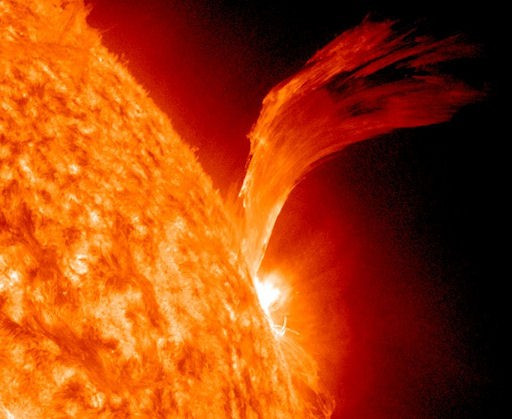Strong Solar Flares Heading Towards Earth

Two strong solar flares are heading towards earth. They will reach earth on 8 March at about 1:25 AM EST. These solar flares are so powerful they can disrupt power grids, satellites, high frequency radio communication and the global positioning system.
They can even result in a severe geomagnetic storm. On the other hand they can create a beautiful northern lights display for sky watchers.
Nasa astronomers have discovered two strong solar flares heading towards earth. They discovered this with the Solar Terrestrial Relations Observatory (Stereo) and the Solar Heliospheric Observatory (Soho) spacecraft.
The sun erupted with one of the largest solar flares on 6 March, 2012 at 7PM EST. This flare was categorised as an X5.4, making it the second largest flare, after an X6.9 in August. Just after an hour, another X type solar flare erupted on the sun's surface.
The first solar flare is travelling at a speed of 1,300 miles per second and the second at 1,100 miles per second. Astronomers predict that this solar flare will also impact both earth and mars, as well as pass by several Nasa spacecraft like Messenger, Spitzer, and Stereo-B.
The solar flare occurs when the magnetic energy which is built up in the Sun's atmosphere is suddenly released; the amount of energy released is equal to millions of hydrogen bombs exploding at the same time. The first solar flare recorded was on 1 September, 1859 by two astronomers in England.
There are three types of solar flares: X class, M class and C class. X flares are the biggest solar flares that can effect radio blackouts and have long-lasting radiations on earth. M flares are medium-sized flares that affect the earth's polar region. C class flares are small-sized flares and they are hardly noticeable.
© Copyright IBTimes 2025. All rights reserved.





















